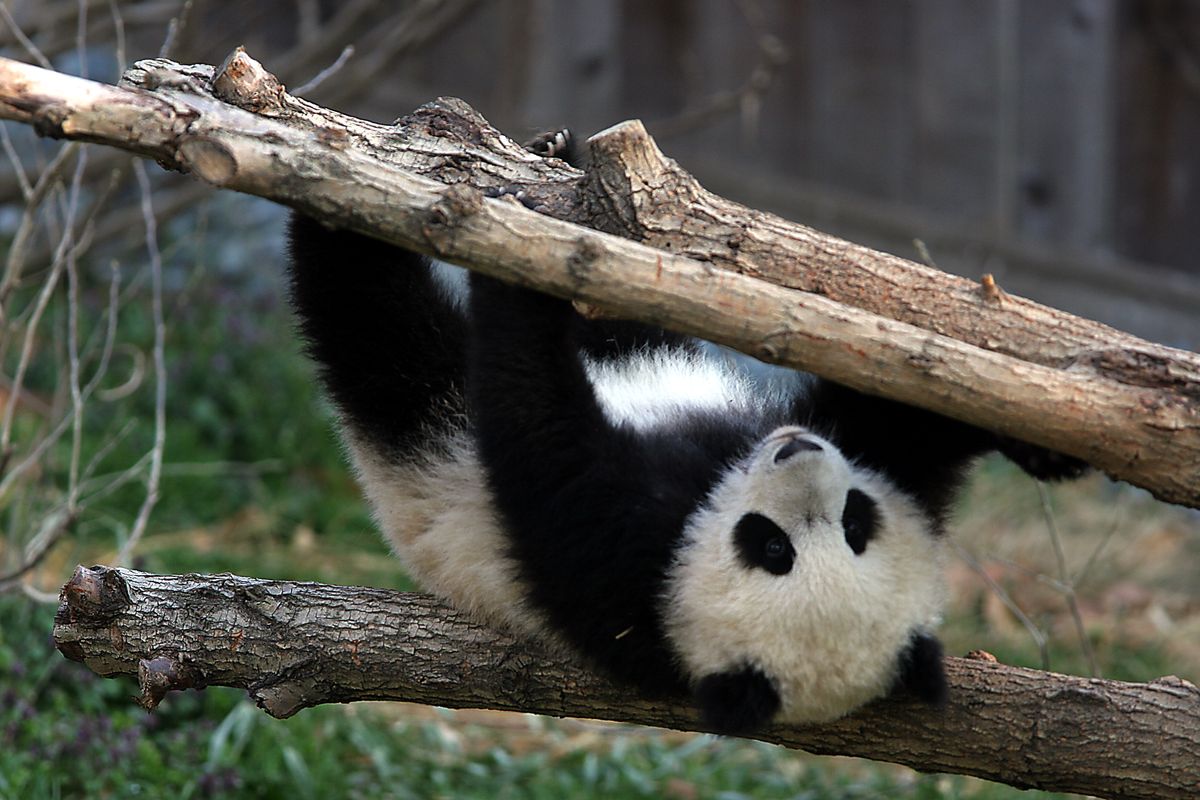Giant pandas have been stars of the National Zoo for 50 years
Mei Xiang and Tian Tian munch away on bamboo in January 2002, a little more than a year after arriving at the National Zoo in Washington, D.C. (Michael Lutzky/Washington Post)
Few animals receive as much attention as giant pandas. The black-and-white fur balls can be seen in zoos around the world, but hardly any lived outside their native China until a half-century ago. Their arrival in Washington, D.C., was a big deal, but it came about in an unexpected way.
When President Richard Nixon and his wife, Pat, made an official visit to China in February 1972, the first lady sat next to Chinese Premier Zhou Enlai at a formal dinner. She mentioned that she loved pandas. Zhou, who was looking to improve China’s relationship with the U.S., responded, “I’ll give you some.”
He made good on the offer just two months later. A pair of young pandas – a female named Ling-Ling and a male named Hsing-Hsing – arrived at Washington, D.C.’s National Zoo. “I think panda-monium is going to break out right here at the National Zoo,” Pat Nixon said jokingly at the arrival celebration on April 16.
Nixon was right. People from the Washington area and across the country stood in long lines to see Ling-Ling and Hsing-Hsing. Not only were they cute, but they also had a compelling story: The species needed help because the number of wild pandas in China was declining due to habitat loss and other problems.
Fans hoped the pair would produce cubs, and they did. But none of the newborns – who are the size of a stick of butter – survived longer than a few days. Ling-Ling and Hsing-Hsing spent many years at the zoo, dying there in old age in 1992 and 1999.
The Smithsonian wanted to continue learning about pandas and educating the public about the endangered species. The Chinese government offered to lend a male panda and a female panda for $1 million per year. The zoo agreed, and Tian Tian and Mei Xiang arrived in December 2000. The two instantly became the most popular animals at the zoo.
Panda watchers grew even more excited in 2005 when Mei Xiang gave birth to Tai-Shan in 2005. Each cub milestone became a news story. Sadly, Tai couldn’t stay at the zoo. Pandas born there were required to be sent to a breeding program in China, so in 2010 the city said farewell to its much-loved cub.
Mei eventually had three more healthy cubs: Bei Bei, Bao Bao – who both moved to China – and Xiao Qi Ji, who is still at the zoo. Xiao Qi Ji was called “little miracle” because his mom became the second-oldest giant panda known to give birth when he was born in 2020.
The National Zoo has planned a “pandaversary” April 16 and 17 to mark 50 years of giant pandas in Washington, D.C. The event will include dance performances, scientist talks, showings of a new panda documentary and treats for Mei Xiang, Tian Tian and Xiao Qi Ji.
In the past 50 years, the giant panda story has become more hopeful. Thanks to conservation efforts in China and zoos worldwide, the species has moved from endangered to threatened, a less-worrisome category. Those interested in seeing pandas in person should visit the National Zoo before December 2023.
China has decided that all three pandas will leave Washington, D.C., at that time, and there is no plan to send more. It could be a new era for the species – one spent mostly at home.

